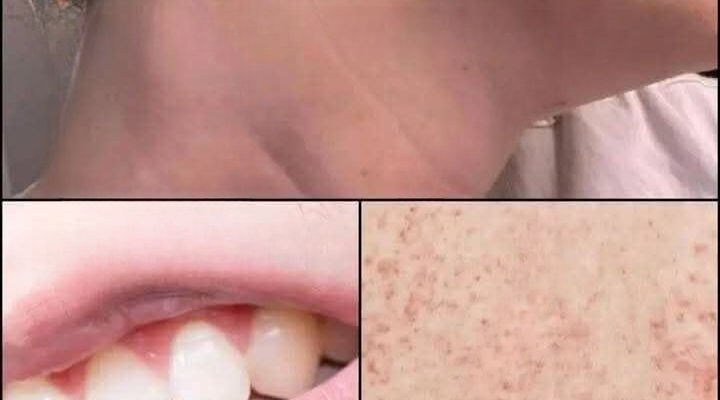
Persistent itching, redness, or bumps in the groin area can feel uncomfortable and distracting, but in some cases, they may signal more serious skin problems rather than simple irritation. While friction, sweat, or tight clothing can cause temporary discomfort, certain symptoms may indicate infections, fungal conditions, or other dermatological concerns. Ignoring these warning signs can allow problems to worsen, leading to pain, spread of infection, or chronic skin issues. Understanding the causes, symptoms, and treatment options for groin irritation is essential for maintaining both comfort and overall health.
The groin region is naturally warm, moist, and often covered by clothing, creating an ideal environment for bacterial or fungal growth, skin inflammation, and irritation. This makes it particularly vulnerable to several common conditions. In this article, we will explore the most frequent causes of groin irritation, their signs to watch for, and practical management tips that can help you address the problem effectively.
1. Ingrown Hairs
What Happens
Ingrown hairs occur when a hair grows back into the skin instead of outward. This can cause inflamed, pimple-like bumps that sometimes become infected and painful. Although often a cosmetic concern, ingrown hairs in the groin can lead to itching, redness, and even secondary infection if not treated properly.
Common Triggers
- Shaving, waxing, or plucking hair too close to the skin
- Friction from tight clothing, such as athletic wear or underwear
- Naturally coarse, curly, or dense hair that is prone to curling under the skin
Signs to Watch For
- Small red or pus-filled bumps
- Swelling or tenderness in the affected area
- Itching or general irritation around the hair follicle
How to Manage
- Apply warm compresses to reduce inflammation and promote drainage
- Use gentle exfoliation to help release trapped hairs
- Avoid shaving until the area has healed
- Consult a dermatologist if bumps become infected or recur frequently
2. Folliculitis
What Happens
Folliculitis is the inflammation of hair follicles, typically caused by bacterial or fungal infections. It appears as clusters of small, pimple-like bumps and can affect any hair-bearing area, including the groin.
Common Triggers
- Bacterial infections, especially Staphylococcus aureus
- Friction from clothing, particularly tight or non-breathable fabrics
- Shaving, waxing, or exposure to hot tubs and public pools
Signs to Watch For
- Red or white-headed bumps around individual hair follicles
- Mild burning or itching sensations
- Tenderness or soreness localized to affected areas
How to Manage
- Wash the area with antibacterial soap to reduce infection risk
- Apply topical antibiotics or antiseptic creams as recommended
- Warm compresses can help relieve discomfort
- Severe or persistent cases may require prescription antibiotics from a healthcare provider
3. Tinea Cruris (Jock Itch)
What Happens
Tinea cruris, commonly known as jock itch, is a fungal infection that thrives in the groin, inner thighs, and buttocks. Although more common in men, anyone can develop this condition. Fungi flourish in warm, moist environments, making the groin a particularly vulnerable area.
Common Triggers
- Excessive sweating, often during exercise or hot weather
- Wearing tight or synthetic clothing that traps moisture
- Sharing towels, clothing, or sports gear
- Poor personal hygiene or infrequent washing of the affected area
Signs to Watch For
- Red, ring-shaped rashes with slightly raised, scaly edges
- Itching or burning sensations in the groin
- Rash spreading to surrounding areas, such as thighs or buttocks
How to Manage
- Apply over-the-counter antifungal creams, such as clotrimazole or terbinafine
- Keep the area clean and thoroughly dry after washing
- Wear breathable, loose-fitting underwear to reduce moisture buildup
- Avoid sharing personal items to prevent the spread of infection
4. Contact Dermatitis
What Happens
Contact dermatitis is an inflammatory reaction caused by exposure to irritants or allergens. In the groin, it can occur from soaps, detergents, fabric softeners, or new clothing materials. Symptoms often mimic other conditions, which makes accurate identification crucial.
Common Triggers
- Soaps, lotions, or personal care products
- Detergents or fabric softeners used on underwear or athletic gear
- Latex or synthetic fabrics causing an allergic reaction
Signs to Watch For
- Red, inflamed skin that may appear dry or scaly
- Itching or burning, often worsening after exposure to the irritant
- Small blisters or oozing in severe reactions
How to Manage
- Identify and remove the irritant or allergen
- Use gentle, fragrance-free soaps and detergents
- Apply soothing creams such as petroleum jelly or mild corticosteroid ointments
- Consult a healthcare provider if symptoms persist or worsen
5. Heat Rash (Miliaria)
What Happens
Heat rash develops when sweat ducts become blocked, leading to trapped sweat and inflammation. The groin is particularly susceptible due to warmth, moisture, and friction.
Common Triggers
- Hot and humid weather
- Excessive sweating during exercise or sports
- Tight clothing that prevents airflow
Signs to Watch For
- Tiny, raised red bumps or blisters
- Itching or prickling sensations
- Irritation that worsens with continued heat exposure
How to Manage
- Keep the area cool and dry
- Wear loose-fitting, breathable clothing
- Avoid heavy physical activity until the rash improves
- Apply soothing powders or over-the-counter treatments to relieve itching
Prevention Tips for Groin Irritation
Preventing groin irritation is often easier than treating it. Simple lifestyle and hygiene practices can significantly reduce the risk of skin issues:
- Maintain Good Hygiene: Wash daily with gentle, non-irritating soaps.
- Wear Breathable Clothing: Choose cotton or moisture-wicking fabrics to keep the area dry.
- Avoid Tight Garments: Reduce friction that can lead to folliculitis or ingrown hairs.
- Shave Carefully: Use proper technique, moisturize the skin, and avoid aggressive hair removal.
- Keep the Area Dry: After showering or sweating, pat the groin dry thoroughly.
- Monitor Skin Changes: Early detection of unusual bumps, redness, or irritation allows prompt treatment.
When to See a Doctor
While minor irritation may improve with home care, medical consultation is necessary if you notice:
- Persistent or worsening redness
- Pus-filled or painful bumps
- Severe itching or burning that doesn’t respond to over-the-counter treatments
- Rash spreading to other areas
- Signs of infection such as fever, swelling, or warmth around the affected area
Prompt evaluation can prevent complications and ensure proper diagnosis and treatment.
The Psychological Impact
Chronic or visible groin irritation can affect confidence, daily comfort, and even mental well-being. Teens and adults alike may feel embarrassed discussing symptoms, which can delay treatment. Open communication with healthcare providers is crucial to address both physical and emotional impacts.
Conclusion
Groin irritation is not always just a minor inconvenience. Conditions ranging from ingrown hairs and folliculitis to fungal infections and contact dermatitis can create discomfort and pose health risks if left untreated. Recognizing the symptoms, practicing good hygiene, wearing breathable clothing, and seeking timely medical care are essential steps in prevention and management.
By paying attention to skin health and taking preventative measures, individuals can protect not only their comfort but also their overall well-being. Early action is the key to avoiding complications and maintaining healthy skin in sensitive areas.


